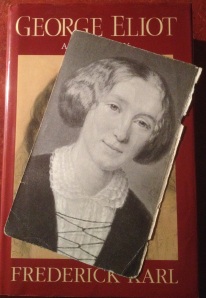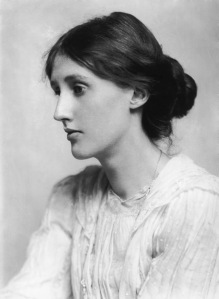Given that my recent sequence ended by looking at the need for concerted action it seemed a good idea to republish this sequence from many years ago. Since I first wrote this significant progress has been made in terms of the Bahá’í footprint on world affairs, but, as the Universal House of Justice admits in its letter of 28 November 2023, we still have a long way to go:
. . . despite the community’s current, all too obvious limitations when viewed in relation to its ideals and highest aspirations—as well as the distance separating it from the attainment of its ultimate objective, the realization of the oneness of humankind—its resources, its institutional capacity, its ability to sustain systematic growth and development, its engagement with like-minded institutions, and its involvement in and constructive influence on society stand at an unprecedented height of historical achievement.
If One Common Faith helps the Bahá’í community understand the current context of the vision we are seeking to implement (see previous post), Century of Light helps us see how our understanding of this vision developed by slow degrees.
Obstacles to Understanding
Secularisation partly explains the difficulty humanity as a whole has in grasping a transcendent vision of global transformation: the failure of religion makes a contribution too.
. . . the secularization of society’s upper levels seemed to go hand in hand with a pervasive religious obscurantism among the general population.
(Century of Light: Sec I, page 6)
We also all lack precedents to aid our understanding:
Our century, with all its upheavals and its grandiloquent claims to create a new order, has no comparable example of the systematic application of the powers of a single Mind to the building of a distinctive and successful community that saw its ultimate sphere of work as the globe itself.
(Century of Light: page 10)

British Museum: London
People might, for example, claim that Marx had developed what seemed to be a global vision but it is not in fact comparable. It was a muddled reductionist vision. It was reductionist in the way that it relegated ideas to the back seat and promoted material conditions to the driving seat of history. It was muddled because, at the same time, it used exhortation to enlist the persuadable to throw their weight behind the idea of a supposedly impersonal dialectic of change. Also all the attempts to implement the vision have so far been catastrophically destructive, involving Chekhov‘s pet hates of ‘violence and lies‘ in abundance. Not only that but Marx had the benefit of one of the best libraries in the world – the British Museum’s reading room – and still failed to achieve the breadth, depth, complexity, compassion and ultimate practical efficacy of the vision expounded by Bahá’u’lláh in prison and from exile.
An Unfolding Understanding
Even within the Bahá’í community understanding of the vision evolved over a period of time. ‘Abdu’l-Bahá, in his role as expounder of the words of Bahá’u’lláh, emphasised the role of the recognition of the oneness of the human race (Century of Light: page 23). Later, Shoghi Effendi, who was appointed in his turn as interpreter of the Writings of Bahá’u’lláh and died in London in 1957, drew out the implications:
The principle of the Oneness of Mankind – the pivot round which all the teachings of Bahá’u’lláh revolve – is no mere outburst of ignorant emotionalism or an expression of vague and pious hope. . . . . . It implies an organic change in the structure of present-day society, a change such as the world has not experienced…. It calls for no less than the reconstruction and the demilitarization of the whole civilized world – a world organically unified in all the essential aspects of its life, its political machinery, its spiritual aspiration, its trade and finance, its script and language, and yet infinite in the diversity of the national characteristics of its federated units.
(World Order of Bahá’u’lláh: pages 42-43. Quoted in Century of Light: page 50)
To one degree or another, most Bahá’ís no doubt appreciated that the Assemblies they were being called on to form had a significance far beyond the mere management of practical affairs with which they were charged (op. cit: Page 54). Century of Light again quoted Shoghi Effendi:
. . . . they were integral parts of an Administrative Order that will, in time, “assert its claim and demonstrate its capacity to be regarded not only as the nucleus but the very pattern of the New World Order destined to embrace in the fullness of time the whole of mankind”.
(Century of Light: Page 55)
A word of explanation is perhaps needed here. The Bahá’í Faith has an administrative system that involves electing local and national assemblies on an annual basis. This is done without electioneering: the Bahá’í voter in a secret ballot votes for anyone within the community, local or national as appropriate, who seems to him or her to have the necessary qualities of character and experience to execute the role of Assembly member conscientiously and well. Processes such as consultation (see the earlier post on this subject) are vital decision making tools of these institutions. The pattern can be studied and borrowed from by all, whether Bahá’í or not, and in this way the future shape of the world can be influenced by this pattern.
‘The Bahá’í community,’ it goes on to explain, ‘now embarked [on a stage of development] in which the Administrative Order would be erected throughout the planet, its institutions established and the “society building” powers inherent in it fully revealed’ (Century of Light: Pages 55-56).
It continues with the words of the Guardian (Page 68):
Theirs is the duty to hold, aloft and undimmed, the torch of Divine guidance, as the shades of night descend upon, and ultimately envelop the entire human race. Theirs is the function, amidst its tumults, perils and agonies, to witness to the vision, and proclaim the approach, of that re-created society, that Christ-promised Kingdom, that World Order whose generative impulse is the spirit of none other than Bahá’u’lláh Himself, whose dominion is the entire planet, whose watchword is unity, whose animating power is the force of Justice, whose directive purpose is the reign of righteousness and truth, and whose supreme glory is the complete, the undisturbed and everlasting felicity of the whole of human kind.
Moving Towards Empowerment
Century of Light speaks of the role of planning not as though ‘the Bahá’í community has assumed the responsibility of “designing” a future for itself’, but as striving ‘to align the work of the Cause with the Divinely impelled process they see steadily unfolding in the world.’ This is a purpose, of course, which can influence all peoples of good will, whether Bahá’í or not. Their duty is to align their efforts with the spirit of the age in their way just as Bahá’ís do in this particular fashion. By these combined efforts the world will change. However:
The challenge to the Administrative Order is to ensure that, as Providence allows, Bahá’í efforts are in harmony with this Greater Plan of God, because it is in doing so that the potentialities implanted in the Cause by Bahá’u’lláh bear their fruit.
(Century of Light: Page 69)
The Greater Plan of God, the spirit of the age seen as the organising principle of unity in diversity, requires the efforts of the whole of humanity. As a Bahá’í community we have to make sure that we provide a kind of catalyst by means of what we do within our administrative system and in collaboration with all people’s good will, the Lesser Plan of God.
Century of Light continues:
. . . . . The organic unity of the body of believers – and the Administrative Order that makes it possible – are evidences of what Shoghi Effendi termed “the society-building power which their Faith possesses.”
(Century of Light: Page 97)
By 1996, it had become possible, as the Faith grew, to see all of the distinct strands of this complex enterprise as integral parts of one coherent whole (Century of Light: page 108). There were still challenges though.
For the most part, however, these [new Bahá’í] friends were essentially recipients of teaching programmes conducted by teachers and pioneers from outside. One of the great strengths of the masses of humankind from among whom the newly enrolled believers came lies in an openness of heart that has the potentiality to generate lasting social transformation. The greatest handicap of these same populations has so far been a passivity learned through generations of exposure to outside influences which, no matter how great their material advantages, have pursued agendas that were often related only tangentially – if at all – to the realities of the needs and daily lives of indigenous peoples.
(Century of Light: pages 108-109)
This highlighted a need, the meeting of which led to the creation of the Training Institute process (page 109) that empowered people to take initiatives and persist in action even under difficult circumstances:
. . . beginning in the 1970s in Colombia, where a systematic and sustained programme of education in the Writings was devised and soon adopted in neighbouring countries. Influenced by the Colombian community’s parallel efforts in the field of social and economic development, the breakthrough was all the more impressive in the fact that it was achieved against a background of violence and lawlessness that was deranging the life of the surrounding society.
The Colombian achievement has proved a source of great inspiration and example to Bahá’í communities elsewhere in the world.
The process of transformation the Cause has set in motion advances by inducing a fundamental change of consciousness, and the challenge it poses for all those of us who would serve it is to free ourselves from attachment to inherited assumptions and preferences that are irreconcilable with the Will of God for humanity’s coming of age (page 136).
Century of Light towards the end (pages 139-140) concludes:
. . . . With the successful establishment in 1963 of the Universal House of Justice, the Bahá’ís of the world set out on the first stage of a mission of long duration: the spiritual empowerment of the whole body of humankind as the protagonists of their own advancement.
We must not underestimate the significance of this achievement:
The process leading to the election of the Universal House of Justice . . . . very likely constituted history’s first global democratic election. Each of the successive elections since then has been carried out by an ever broader and more diverse body of the community’s chosen delegates, a development that has now reached the point that it incontestably represents the will of a cross-section of the entire human race. There is nothing in existence – nothing indeed envisioned by any group of people – that in any way resembles this achievement.
(Century of Light: page 92)
See links below to the subsequent five posts which examine in more detail some of the specific components of this process of empowerment.
Related Articles
Humanity is our Business (3/5): Capacity Building (a)
Humanity is our Business (3/5): Capacity Building (b)
Humanity is our Business (4/5): Devotional Meetings
Humanity is our Business (5/5): (a) The Plight of Children
Humanity is our Business (5/5): (b) What can we do for our children?











